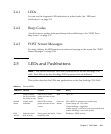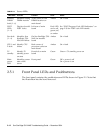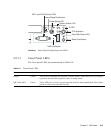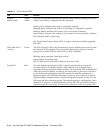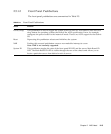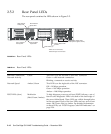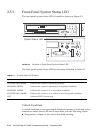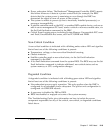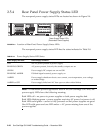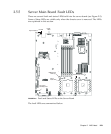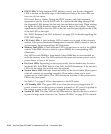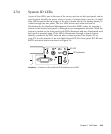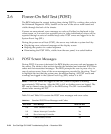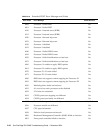
Chapter 2 NAS Head 2-19
■ Power subsystem failure. The Baseboard
1
Management Controller (BMC) asserts
this failure whenever it detects a power control fault (for example, the BMC
detects that the system power is remaining on even though the BMC has
deasserted the signal to turn off power to the system).
■ The system is unable to power up due to incorrectly installed processor(s), or
processor incompatibility.
■ A satellite controller such as the HSC, or another IMPI-capable device, such as an
add-in server management PCI card, sends a critical or non-recoverable state, via
the Set Fault Indication command to the BMC.
■ Critical Event Logging errors, including System Memory Uncorrectable ECC error
and Fatal/Uncorrectable Bus errors, such as PCI SERR and PERR.
Non-Critical Condition
A non-critical condition is indicated with a blinking amber status LED and signifies
that at least one of the following conditions is present:
■ Temperature, voltage, or fan non-critical threshold crossing.
■ Chassis intrusion.
■ Satellite controller sends a non-critical state, via the Set Fault Indication
command, to the BMC.
■ A Set Fault Indication command from the system BIOS. The BIOS may use the Set
Fault Indication command to indicate additional, non-critical status such as
system memory or CPU configuration changes.
Degraded Condition
A degraded condition is indicated with a blinking green status LED and signifies
that at least one of the following conditions is present:
■ Non-redundant power supply operation. This only applies when the BMC is
configured for a redundant power subsystem. The power unit configuration is
configured via OEM SDR records.
■ A processor is disabled by FRB or BIOS.
■ BIOS has disabled or mapped out some of the system memory.
This Troubleshooting Guide gives information on how to isolate the server
component responsible for any of the critical, non-critical, or degraded conditions
listed above.
1. Baseboard refers to the server Main Board.



